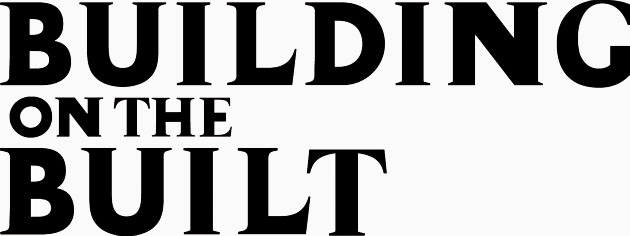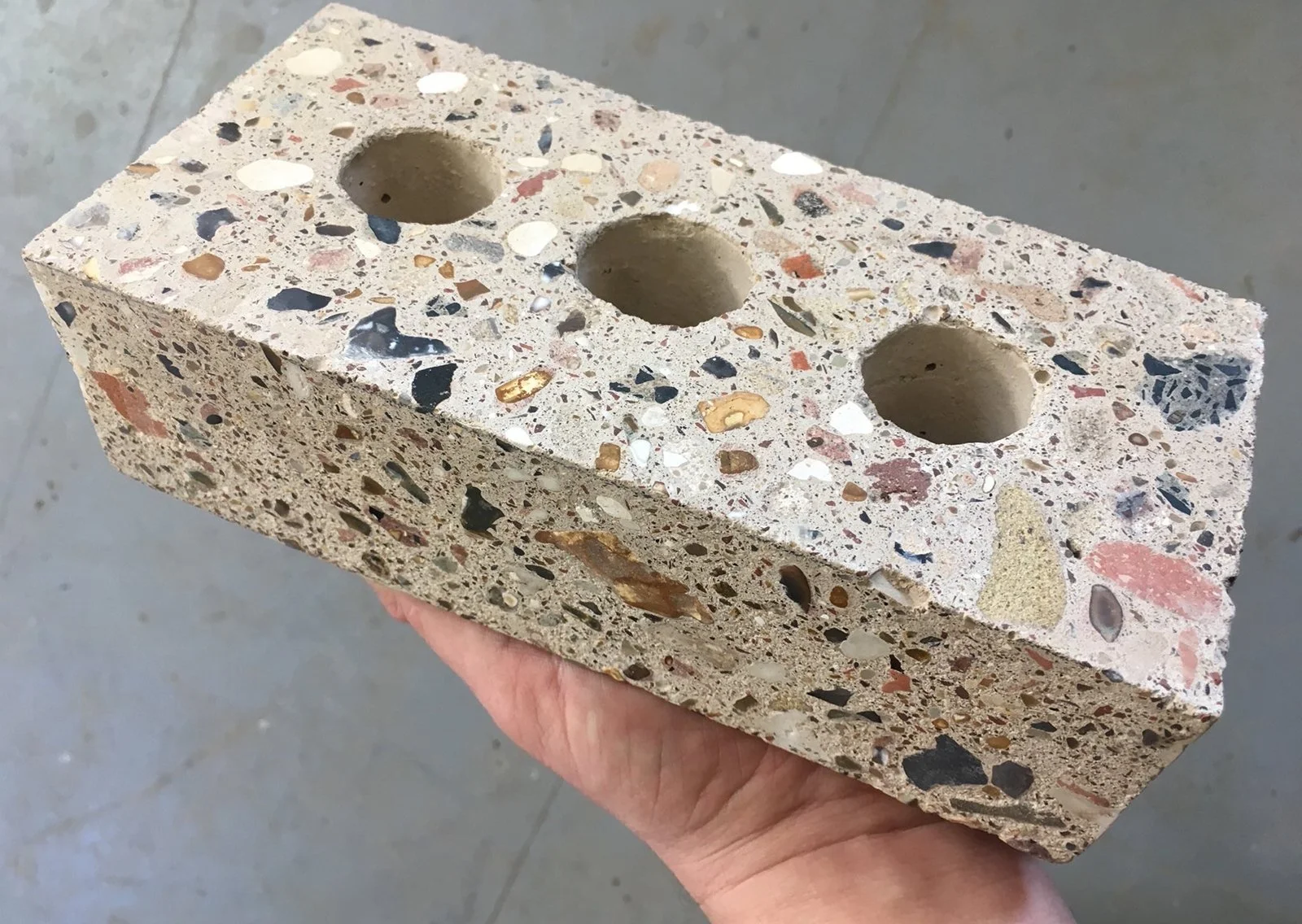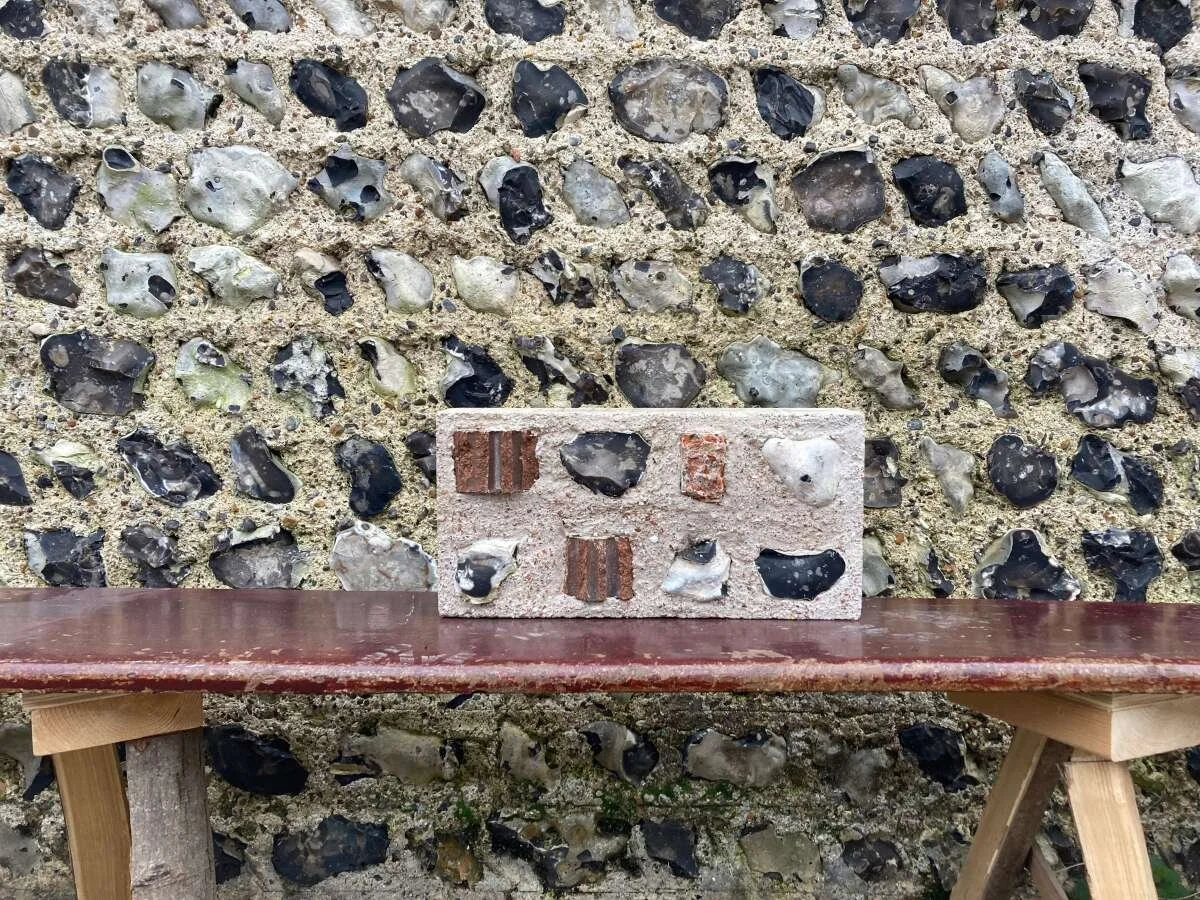Arch-ive: ‘When the Stones Talk: A Builder’s Archive’
Text by Loretta Bosence
Arch-ive is a fantastic irregular publication that focuses on the books that have influenced architectural designers and that they refer to and utilise in their practice. For the third edition, editor Dominic Eley has included essays and interviews with a number of practitioners including Adam Nathaniel Furman, Roz Barr, Edwin Heathcote and the team at Building on the Built too!
To mark the book's 2025 publication we have added an extract from the essay ‘When Stones Talk: A Builder’s Archive’, by Local Works Studio director Loretta Bosence to our own online Archive.
Local Works Studio, formed in the UK in 2017, is a partnership between Loretta, who trained as a landscape architect, and Ben Bosence, a building craftsman. Their practice acts as an intermediary between designers, clients and constructors, by focusing on the creative and sustainable use and reuse of materials and resources from building sites and their surroundings.
Brick prototype by Local Works Studio
LB Records of our modern forms of construction are contained in the orthographic drawings and the written specifications of their architects, who hypothetically envision ideas for the built environment on behalf of clients and orchestrate the assemblage of component parts from a desk. By contrast, the skilled manual transformation of raw materials into habitable structures, informed by localised observation and understanding of conditions, typically practiced by builders in vernacular and traditional modes of construction, is rarely captured on paper. A living archive of building that has the capacity to embrace and equitably share the knowledge and craft of sustainable resource use for dwellings and human-made landscapes is essential to the viable evolution of the built world.
Culture of construction
Master builders, with an all-encompassing knowledge of construction, gained through a life spent in apprenticeship and practice, were the original architects. Etymologically, the term architect derives from the Greek arkhi: chief + tekton: craftsman and is much removed from our contemporary understanding of the role of the architect designer, as the mind, but not the muscle, behind every building. Even today, the dwellings and residential landscapes of the global majority are designed through building, by tradespeople, competent amateurs, and the collective efforts of communities. ‘Designs’ evolve and unfold within an iterative culture of construction and adapt to the limitations of their geographical, ecological, social and economic context, and continue to do so long after people take up residence. Many of these practices have a low impact, or even a regenerative effect, on their surrounding natural environment by necessity. The rise of industrial production of the built environment across the world is seeing the demise of such adaptable, light-touch practices at a time when we need them most.
Conventional modern construction has developed in response to an ever-increasing demand for predictable efficiency and ‘quality’. As the ultimate goal of property development, the elimination of financial risk for investors is sought through a homogeneous culture of standardised procedures, conservative over-specification of materials and just-in-time production. Building materials and components are created at scale in digitised and mechanised systems, with little regard for the environmental and social consequences of their production and transport via global supply chains. Waste is an inevitable by-product of such a hurried and linear industry, where there is no time for the inevitable, unpredictable delays and mistakes that arise when operating in the context of a living planet. The human construction worker is an inefficient instrument of the system.
An alternative to this indifferent, growth-oriented model of construction where profit is centralised, might aim to reclaim the process of building for the purposes of a more ecologically sustainable and socially just ‘pluriverse’ of global communities. It could consider the local landscape context of any site and respond by designing and working with materials that can be procured, transformed and applied with the least movement, processing, additives and layers. Through every material and operational choice an opportunity to create positive ecological impact and to improve social and personal outcomes for all those involved can be seized. As the central autonomous agent in this process the builder is in a position of both giving and receiving those benefits but is also pivotal as the keeper and conveyor of its culture and methods.
Construction that is flexible and responsive in nature, based on observation and practical experience requires a different approach to learning and translation of knowledge, and therefore archiving. It is instructive to think about what archives of building might already exist.
Archive of past building practices
A builder of the past or present learns the trade on the job, via their co-workers, through experience - labouring, apprenticeship, and inter-generational exchange. Technical understanding is transferred via practical demonstration, observation, rules of thumb and the manual feedback loop of trial and error.
The faintest trace of documentary evidence of historic building processes exists in ephemera and in oral tradition. Carpenters’ marks, Roman numerals - scored into timbers with the u-shaped end of a race knife - distinguish between pieces and annotate the order of construction (easily confused with the superstitious scratchings of VV -Virgin of virgins, AM - Ave Maria and the pentangle, intended to ward off evil). Builder’s sketches, or ‘workings out’, scribbled in chalk and pencil on walls and frames, in a moment of problem solving, are occasionally revealed when layers are stripped back during repair or deconstruction. Diaries and logbooks of foremen and head gardeners provide perfunctory insights into calendar, routine, working methods, costs and materials. Antique tools, appearing on stalls at bootfairs and country shows perplex modern tradespeople and hint at obscure techniques, manual ingenuity and skill that is rare in an era of mechanised and digitised construction.
Occupational maxims, sayings, jargon and rules of thumb contain the vestiges of a manual building practice embedded in place, subject to the seasons. This is a language of everyday empirical wisdom, learned through generations of mistakes and successes, yet to be subjected to the rigours of scientific verification. Advice to avoid the use of lime mortar ‘until the swallows return’ is wise, given that newly applied, un-cured lime will shatter when exposed to sub-zero temperatures. Rules of thumb - literally, where an English inch was defined as a ‘thumb’s breadth’ - are still used to make calculations relating to measurement, structure, cost and volume of materials. It required understanding of both ecology and rural life to discern why and how a pleached cut of living wood in a laid-hedge should be ‘no thicker than a lambs tongue’. An appreciation of builders’ lexicon could also help decipher why ‘a dyker’ might ‘tob off a wall’, or ‘a chippy rive a shake’, ‘a brickie tooth a wall frog-up’, or ‘a spread float muck’.
Regional geology creates unique masonry palettes, methods of application and terminology. In Brighton, ‘Bungaroosh’ - rubble masonry containing among other things, beach, flint, clunch and clinker - were cast into gravity-defying walls between dwellings. In the absence of a cohesive oral history of construction, it is the buildings and built landscapes themselves that provide perhaps the richest archive of good past practice and knowledge, when ‘read’ by the discerning eye. They provide a record of what might be possible when attention and ingenuity are applied to the least promising materials and what might, despite our better judgement, stand the test of time.
Bungaroosh wall sample by Local Works Studio
NOTES
Many thanks to Dominc Eley and Loretta Bosence for their help in posting this extract from Arch-ive Edition 3.
Posted 28th November 2025.


